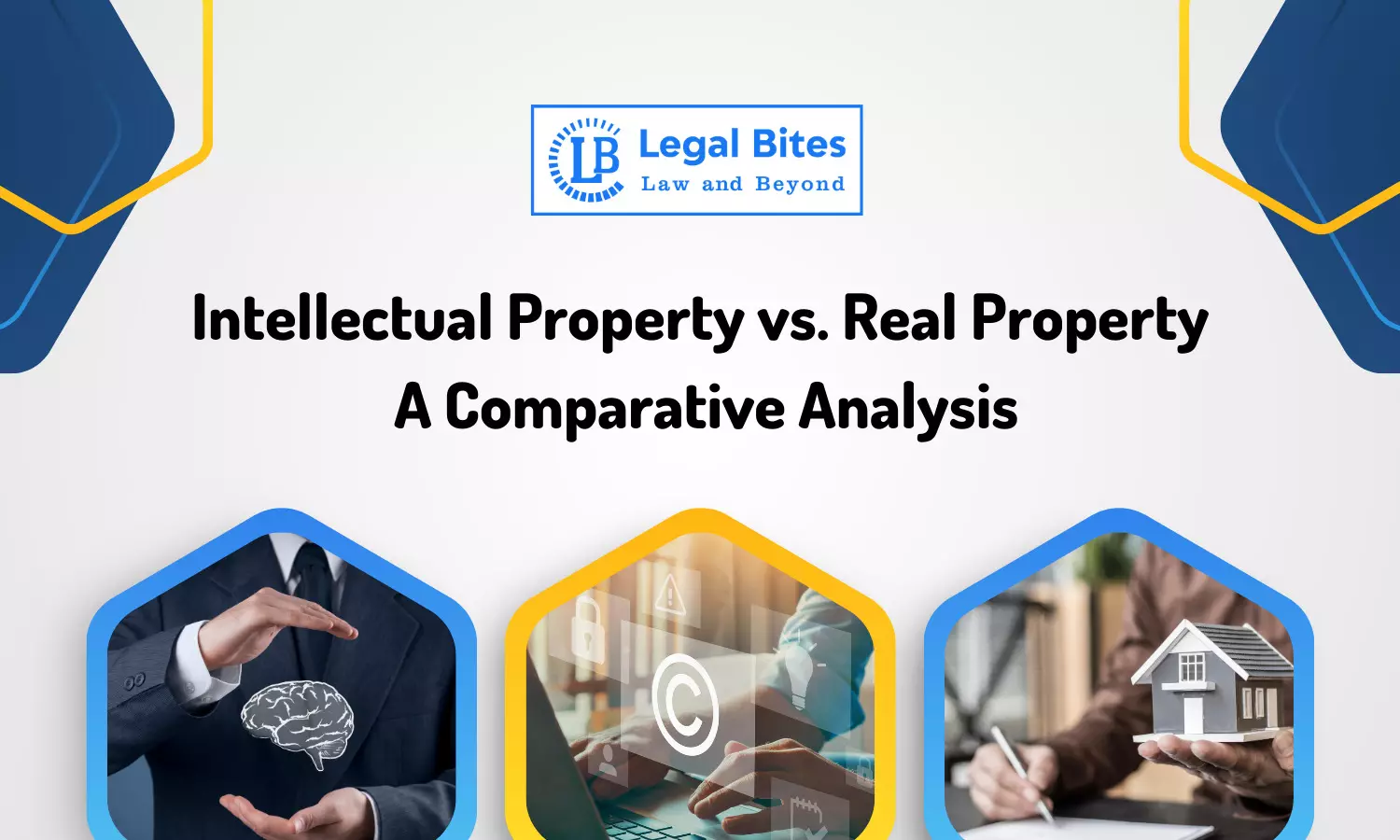Intellectual Property vs. Real Property: A Comparative Analysis
This article offers a comparative analysis of intellectual and real property, highlighting their distinct characteristics and their implications.

The concept of "property" has evolved significantly over time, encompassing a wide range of assets. Traditionally, property was thought of as physical assets like land and buildings, known as "real property." However, with the rise of innovation, creativity, and technology, intangible assets have gained recognition as valuable property, termed "intellectual property" (IP).
This article explores the distinctions between intellectual property and real property, analyzing their characteristics, the rights associated with them, and their relevance in today’s legal landscape.
Understanding Real Property
Real property, or real estate, refers to land and anything permanently attached to it, like buildings or infrastructure. This type of property is tangible, and immovable, and typically involves rights such as ownership, use, and transfer. Ownership of real property grants the owner a range of rights, including:
- Possession - The right to occupy and control the property.
- Exclusion - The right to prevent others from entering or using the property.
- Disposition - The right to sell, lease, or transfer the property.
- Enjoyment - The right to use the property for personal enjoyment or profit.
Ownership of real property is usually documented through deeds, land titles, or registration records. The rights are protected by a combination of local and national laws that govern issues like property tax, zoning, and inheritance.
Defining Intellectual Property
Intellectual property (IP) refers to creations of the mind, such as inventions, literary and artistic works, designs, symbols, and images. IP is intangible, meaning it cannot be physically possessed like real property. Nonetheless, it holds immense value, especially in an era where knowledge and creativity drive economies. The primary types of intellectual property include:
- Patents - Protection for inventions and innovations, giving the inventor exclusive rights to their creation.
- Copyrights - Protection for literary, artistic, and musical works, providing creators exclusive rights to reproduce and distribute their works.
- Trademarks - Protection for distinctive symbols, logos, or names that distinguish products or services.
- Trade Secrets - Protection for confidential business information that provides a competitive edge.
Intellectual property rights (IPR) allow creators to control and monetize their creations, thereby incentivizing innovation and creativity. Unlike real property, IP rights are often limited in duration. For instance, patents typically last for 20 years, while copyrights have varying durations depending on the jurisdiction and type of work.
Key Differences Between Real and Intellectual Property
| Aspect | Real Property | Intellectual Property |
|---|---|---|
| Nature | Tangible, immovable | Intangible, non-physical |
| Types of Assets | Land, buildings, structures | Ideas, inventions, brands, creative works |
| Ownership Rights | Permanent ownership rights | Temporary, limited-duration rights |
| Transferability | Transferable through sale or inheritance | Transferable, but often requires formal agreements |
| Registration | Registered through land deeds, titles | Requires specific registration (e.g., patents, trademarks) for legal protection |
| Legal Protection | Protected by real estate and land laws | Protected by intellectual property laws (WIPO, national IP laws) |
Legal Framework
Challenges in Managing Real and Intellectual Property
Real Property Challenges
- Boundary Disputes: Conflicts over property lines or rights of way can complicate ownership.
- Regulatory Compliance: Owners must comply with zoning laws, building codes, and environmental regulations, which can limit property use.
- Maintenance and Upkeep: Physical assets require upkeep and maintenance, adding to the costs and responsibilities of ownership.
Intellectual Property Challenges
- Infringement Risks: Due to the intangible nature of IP, enforcing rights can be challenging, especially with digital content and online piracy.
- Limited Duration: IP rights are time-bound, so protection may lapse, and the work may enter the public domain.
- International Enforcement: Protecting IP across borders is complex, as IP laws vary between countries, necessitating additional filings and enforcement.
Valuation and Economic Impact
Real property values are generally easier to assess, given tangible factors like location, size, and market trends. Its economic impact is often measured by real estate market performance, which significantly influences national economies.
Intellectual property, on the other hand, is harder to value due to its intangible nature. However, it drives significant economic activity, especially in sectors like entertainment, pharmaceuticals, and technology. IP-intensive industries contribute extensively to GDP and job creation, underscoring the importance of robust IP laws.
Conclusion
While real property and intellectual property differ in their nature, rights, and economic impact, both hold substantial value in modern society. Real property is rooted in physical assets that are easier to assess, own, and transfer, while intellectual property represents the modern economy's intangible assets, often more challenging to protect and enforce.
A solid understanding of these differences is essential for property owners, legal professionals, and businesses alike, as both real and intellectual properties play vital roles in individual wealth and economic growth.

